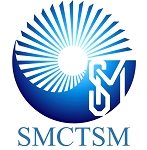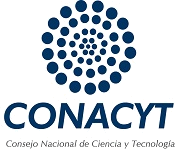Oxidación de Glicerol en Fase Acuosa con Platino soportado en Oxido de Titanio
Keywords:
Óxido de Titanio, Platino, Oxidación Húmeda Catalítica, Glicerol, Titanium oxide, Platinum, Catalytic Wet Oxidation, GlycerolAbstract
RESUMEN En este trabajo se describe la síntesis de catalizadores de platino soportado en óxido de titanio (Pt/TiO2), para la eliminación de glicerol, presente como contaminante en efluentes acuosos, mediante la reacción de oxidación húmeda catalítica. Se describe la síntesis de óxido de titanio (TiO2), por el método sol-gel. El Pt se deposita en el TiO2 mediante la técnica de impregnación a humedad incipiente en relación de 0.5 y 1.0 % en peso, se estudian las propiedades estructurales y morfológicas tanto del soporte como del catalizador mediante técnicas de caracterización convencionales. Las pruebas de actividad del catalizador en la eliminación de glicerol, se realizan en un reactor por lotes, tipo slurry, y la concentración remanente de glicerol es determinada por UV-vis. Los resultados de actividad muestran una eliminación de glicerol del 90 % a la temperatura de 150 °C, con el catalizador Pt/TiO2 al 1.0 % en peso. Glycerol oxidation in Aqueous Phase with Platinum supported on Titania ABSTRACT In this work, the synthesis of platinum catalyst supported on titanium oxide (Pt/TiO2) for the removal of glycerol is described, as a contaminant present in aqueous effluents, by catalytic wet oxidation reaction. Synthesis of titanium oxide (TiO2) is by the sol-gel method. The Pt is deposited on the TiO2 using the technique of incipient wetness impregnation in ratio 0.5 and 1.0 wt%, morphological and structural properties of both the support and the catalyst by conventional characterization techniques are studied. Tests of catalyst activity in the glycerol removal are performed in a batch reactor, slurry type, and the remaining glycerol concentration by UV-vis is determined. Activity results show a removal of 90 % glycerol at a temperature of 150 °C, with the catalyst Pt/TiO2 1.0 wt%.References
C. Pestana, A. Guerra, G. Ferreira, C. Turci, C. Mota, J. Braz. Chem. Soc., 24(1), 100-105 (2013). http://www.scielo.br/pdf/jbchs/v24n1/a14v24n1.pdf
S. K. Bhargava, J. Tardio, J. Prasad, K. Föger, D.B. Akolekar , and S.C. Grocott, Ind. Eng. Chem. Res. 45 (4), 1221-1258 (2006). DOI: 10.1021/ie051059n
L. Mingming, J. Guolin, X. Xun, H. Bo, W. Yang, M. Dongfang. Recent Patents on Chem. Eng. 6 (2), 79-86 (2013). DOI: 10.2174/2211334711306020001.
X. Tang, J. Chen, X. Huang, Y. Xu and W. Shen, Appl. Catal. B: Environ. 81, 115-121 (2008). DOI:10.1016/j.apcatb.2007.12.007.
C. Zhang, H. He, K. Tanaka, Appl. Catal. B: Environ. 65, 37-43 (2006). DOI:10.1016/j.apcatb.2005.12.010.
P. Panagiotopoulou, E.E. Karamerou, D.I. Kondarides, Catal. Today, 209, 91-98 (2013). http://dx.doi.org/10.1016/j.cattod.2012.09.029
P. Panagiotopoulou, A. Christodoulakis, D. Kondarides, S. Boghosian, S. Tauster, J. Catal. 240, 114 (2006). DOI:10.1016/j.jcat.2006.03.012.
J. Hernández, A. Aguilar, S. Castillo, B. Cerón, R.D. Arizabalo, M. Moran, Catal. Today, 148, 115-118 (2009). DOI:10.1016/j.cattod.2009.04.019.
N. K. Keppy, G. Bain, M. W. Allen, Aplication Note: 51853, Thermo Fisher Scientific, Madison, WI, USA. http://www.analiticaweb.com.br/newsletter/08/AN51853_Biodiesel_UV.pdf
S. Mseddi, A. Njeh, D. Schneider, H. Fuess, M.H.B. Ghozlen, J. Appl. Phys., 110, 104506-104507 (2011). http://dx.doi.org/10.1063/1.3662188.
Z. Kaidanovych, Y. Kalishyn, P. Strizhak, Advanc. Nanoparticles, 2, 32-38 (2013). http://dx.doi.org/10.4236/anp.2013.21007.
D. Mardare, N. Cornei, G.I. Rusu, Superlattices and Microstructures, 46, 209-216 (2009). DOI:10.1016/j.spmi.2008.12.031.
L. M. Ahmed, I. Ivanova, F. H. Hussein, D. W. Bahnemann, Inter. J. Photoenergy, 1, 1-9 (2014). http://dx.doi.org/10.1155/2014/503516.
M. H. Brijaldo-Ramírez, Tesis de maestría, Universidad Nacional de Colombia (2010).
C. Hwang and C. Yeh, J. Mol. Catal. A: Chem. 112, 295-302 (1996). PI1 S1381-1169(96)00127-6.
K. Ebitani and H. Hattori, Bull. Chem. Soc. Jpn. 64, 2422-2427 (1991). http://doi.org/10.1246/bcsj.64.2422.
J.J. Murcia, M.C. Hidalgo, J.A. Navío, V. Vaiano, D. Sannino, P. Ciambelli, Catal. Today, 209, 164-169 (2013). http://dx.doi.org/10.1016/j.cattod.2012.11.018.
J. Liu, S. Eser. Fuel Science Program, 209 Academic Projects Building, Department of Materials Science and Engineering. The Pennsylvania State University, University Park, PA 16802, USA (1995).
https://web.anl.gov/PCS/acsfuel/preprint%20archive/Files/38_2_DENVER_03-93_0452.pdf.
Downloads
Published
Issue
Section
License
Copyright (c) 2016 Superficies y Vacío

This work is licensed under a Creative Commons Attribution 4.0 International License.
©2025 by the authors; licensee SMCTSM, Mexico. This article is an open access article distributed under the terms and conditions of the Creative Commons Attribution license (http://creativecommons.org/licenses/by/4.0/).





